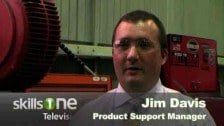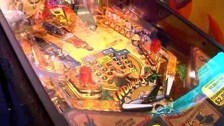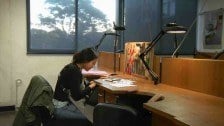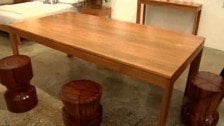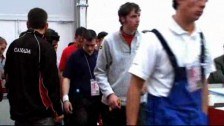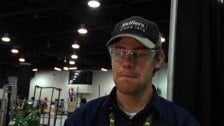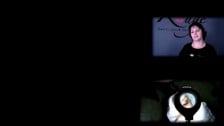Fine arts in ceramic
Skills one interviews ceramics maker and business owner, David Edmonds. David produces a piece for us from scratch in his studio. He shows us some of his prototypes, his works in progress and completed and even some of his failed attempts.What is involved in the creative process of making a beautiful, finely crafted piece of ceramic art? Who is the person behind these pieces?
About David and his ceramics:
David sold his bicycle when he when he was 14 and bought a Potter’s wheel. He is completely self taught. He went to art school and studied ceramics and sculpture and afterwards travelled for 5 years. During his travelled he saw various holes in the fine arts market which he didn’t exploit till years later.
During his career he has worked for many different design and creative studios and houses, picking up new skills and honing his existing ones. He says that he was very lucky in that the companies and people he worked for made his mistakes for him, for him to learn from.
He watched and waited, and, when he turned 40, his friends finally persuaded him to start making use of his skills to start his own business designing his own pieces and running things his way.
He says life experience is completely vital to his craft. He has always had an interest in problem solving and that this skills is completely vital to what he does.
In the medium of ceramics, he says, you can exploit such a small area, make changes, create something unique that the market wants and be very successful. This is what he has done. It has taken an extremely long time to perfect that point of difference in his work and to be able to present that to the market.
David has spent years getting the glaze, finish, colours and shape of his pieces right. He is justifiably proud of his work and has been very successful because of it.
He aims his products at the very top end, the niche markets catering for the competitive gifts and home wares markets. For a long time this industry in general has been dominated by cheap imported Asian goods.
It has been his experience that Asian manufactured pieces in his industry are generally lower in quality. This opinion was reinforced when he worked with Sunbeam on their new range of all ceramic kitchen appliances. He won an Australian International design award for his work on the Sunbeam Ceramic Kettle. Here was a company with millions of dollars to spend on R & D, thousands of man-hours to devote to solving this very tricky technological problem (no one has ever made a ceramic kettle before, especially a cordless ceramic element married with stainless steel.) and they were unable to solve a design issue over at their sites in China for 3 years. They produced 50,000 prototypes!
David worked on the problem, relishing the opportunity to use his skills to solve such a difficulty. He says he has never worked so hard in his life. He solved the problem in 3 months and won the design award in the process. Like so many Australian industries these days, manufacture may be completed in countries where labour is cheaper but quality control and design issues often need to be solved over here.
Jobs like this pay the bills for David and allow him to concentrate his efforts on comfortably meeting the demand for the products in his basic range. He makes the point that his is a named range, he trades under his own name, and there is a great deal of personal integrity involved.
For this reason, he puts in heart and soul into jobs that, while they may pay well and be not what he is about as an artist, he maintains the same commitment to quality.
Fashions exist in home wares and gifts in exactly the same way as any other market. Behind all this is his knowledge of design fundamentals. He carefully researches his market. Both his basic and signature ranges are distinctive, mostly asymmetrical, and like nothing else out there on the market. This has paid dividends because he is now in a position where his work is in high demand.
David is very aware that he has commercial overheads, that he lives near his clients in the heart of a big expensive city, Sydney. 90% of what he does is retail his basic range wholesale to the gift market. Most of his time is spent in the manufacture of his basic range.
Food and colour are big inspirations. The edge and satin matte surface of both ranges, is designed to be photographed for cookbooks and the magazine industry. His plates are used to display food. That informs the general public of his products, he says where his skills come in is that he can repeat the same thing year in year out and therefore can deliver to this always hungry industry.
Realism and marketing to your market are now a major part of running any business in Australia.
If there’s anything David has learned it is that while uniqueness is key, the reality is if you can’t bring that uniqueness to your market you may as well be the same as everyone else.
